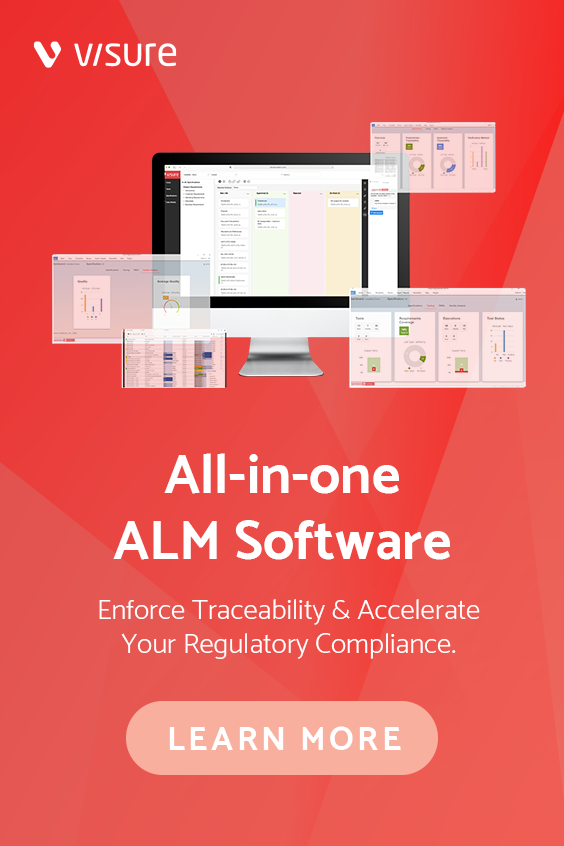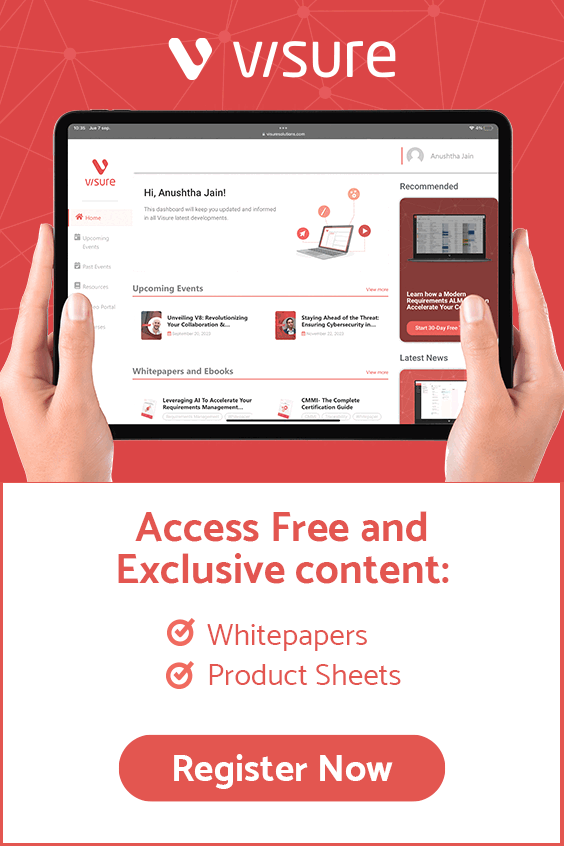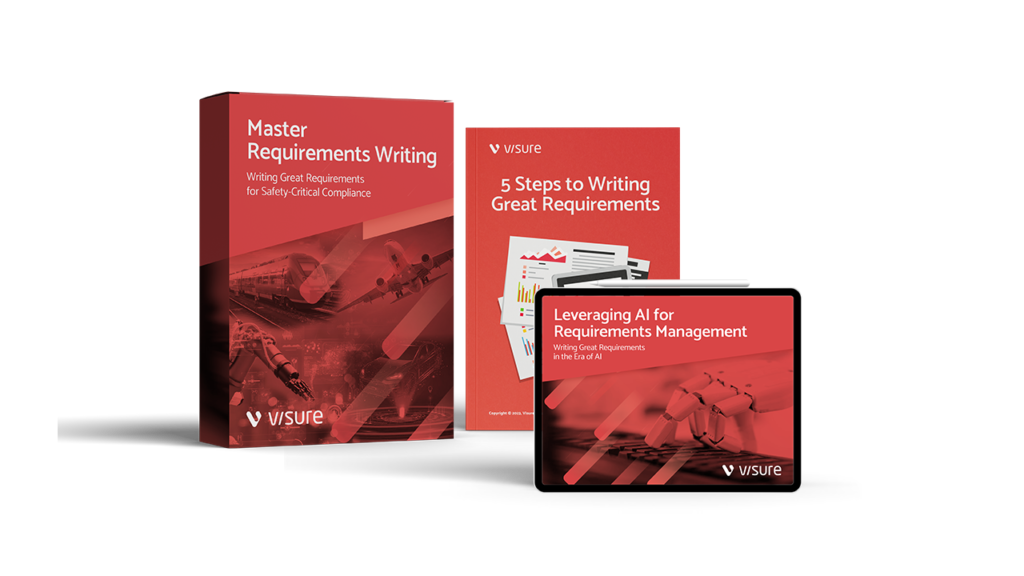In today’s complex digital landscape, organizations are under immense pressure to manage risks effectively while maintaining full cybersecurity compliance. Traditional methods for handling these processes are often manual, time-consuming, and error-prone. Enter AI-driven requirements management, a transformative approach that streamlines risk management and ensures compliance with industry standards across regulated sectors.
In this article, we explore how AI-powered requirements management tools are revolutionizing the way businesses approach risk mitigation, compliance, and requirements traceability.
Why Risk Management and Cybersecurity Compliance Matter?
Organizations operating in industries like automotive, aerospace, defense, healthcare, and critical infrastructure are bound by strict regulatory frameworks such as:
- ISO 21434 (Road Vehicles – Cybersecurity Engineering)
- IEC 62443 (Industrial Automation and Control Systems Security)
- NIST Cybersecurity Framework
- DO-178C, ISO 26262, and FDA 21 CFR Part 11
Failing to comply can result in penalties, product recalls, reputational damage, and even loss of life in safety-critical environments. Efficient risk management and cybersecurity compliance are not just regulatory checkboxes; they are essential to product integrity and operational resilience.
The Role of Requirements Management in Risk and Compliance
What Is Requirements Management?
Requirements management is the process of documenting, analyzing, validating, and maintaining requirements throughout the system lifecycle. In the context of risk management and cybersecurity compliance, it ensures that security and risk mitigation requirements are properly captured, traced, tested, and updated.
Limitations of Traditional Requirements Management
Traditional methods, using spreadsheets, Word documents, or disconnected tools, pose major challenges:
- Lack of real-time traceability
- Manual effort and increased human error
- Difficult impact analysis
- Time-consuming risk assessments
- Compliance gaps during audits
These inefficiencies hinder an organization’s ability to maintain full requirements lifecycle coverage and align with regulatory standards.
How AI-Driven Requirements Management Transforms Risk and Compliance?
1. Automated Risk Identification and Mitigation
AI can scan requirements and automatically:
- Detect potential security and functional risks
- Recommend mitigations
- Populate risk matrices (e.g., FMEA, FTA, FMEDA)
- Link risks directly to relevant requirements and test cases
This AI-powered risk management reduces the manual workload and enables faster, more proactive decision-making.
2. Real-Time Traceability Across the Requirements Lifecycle
AI-driven traceability enables organizations to:
- Maintain live connections between requirements, risks, test cases, and compliance artifacts
- Automatically detect broken links or inconsistencies
- Instantly perform impact analysis when changes occur
- Ensure full end-to-end requirements traceability
This level of traceability is critical during audits and for meeting standards like ISO 26262, IEC 61508, and DO-178C.
3. Compliance Automation and Audit Readiness
AI can help generate compliance reports aligned with frameworks like:
- ISO 21434 (automotive cybersecurity)
- NIST SP 800-53 (IT and cloud security)
- GDPR, HIPAA, and other data protection regulations
It also provides templates and workflows tailored to industry-specific requirements, ensuring faster compliance validation and audit preparedness.
Benefits of AI-Driven Requirements Management for Risk and Cybersecurity
- Enhanced Accuracy – AI reduces human error by automating tedious tasks and providing intelligent suggestions.
- Accelerated Development – Automation speeds up requirement reviews, risk analysis, and compliance reporting.
- Improved Collaboration – Centralized platforms enhance visibility and communication across engineering, risk, and compliance teams.
- Continuous Compliance – Real-time monitoring ensures systems remain aligned with evolving regulatory requirements.
- Scalable Risk Framework – AI helps scale your risk management processes as systems grow in size and complexity.
Key Features to Look for in AI-Powered Requirements Management Tools
When evaluating a requirements management software for cybersecurity compliance and risk management, look for:
- AI-assisted requirement creation and review
- Built-in risk assessment modules (FMEA, HARA, etc.)
- Preconfigured compliance templates (ISO, NIST, FDA, etc.)
- Live traceability and version control
- Change impact analysis
- Collaboration tools with role-based access
- Integration with testing and DevOps tools
Use Case Example: Automotive Cybersecurity with ISO 21434
An automotive manufacturer uses an AI-driven requirements management platform to comply with ISO 21434:
- AI helps define and validate cybersecurity goals during the concept and design phases.
- Risk assessments (like TARA) are automatically generated based on system architecture.
- Requirements, risks, and test cases are linked in real-time.
- Compliance reports are exported directly from the platform for regulatory submission.
The result? Faster certification, reduced risk exposure, and a fully traceable, audit-ready system.
Future of AI in Risk and Requirements Management
As regulations evolve and systems become increasingly complex, AI in requirements engineering will play a growing role in:
- Automating compliance updates
- Supporting predictive risk modeling
- Enabling intelligent traceability
- Offering natural language processing (NLP) for requirement reviews
The future points toward adaptive, AI-driven platforms that not only manage requirements but also anticipate and mitigate compliance risks in real time.
Final Thoughts: Embrace AI for Smarter Compliance
AI-driven requirements management isn’t just a nice-to-have; it’s becoming a competitive necessity. By embracing AI tools, organizations can:
- Proactively manage risks
- Streamline regulatory compliance
- Improve traceability and development efficiency
- Reduce costs and avoid compliance pitfalls
If you’re navigating the complex world of cybersecurity standards, risk frameworks, and requirements lifecycle management, it’s time to upgrade your process with AI.
Check Out The Comprehensive Webinar Training
In this webinar, we’ll cover:
- Cybersecurity Compliance Challenges – Understand key challenges in meeting standards like ISO 21434 and NIST, and their impact on requirements management.
- AI for Risk Identification & Mitigation – See how AI automates risk detection and mitigation planning to reduce manual effort.
- Real-Time Traceability for Compliance – Learn how AI ensures end-to-end traceability across systems for easier audits and regulatory alignment.
- Faster, More Accurate Development – Discover how AI accelerates requirements processes while improving accuracy and reducing errors.
- Building a Resilient Compliance Framework with AI – Learn how to strengthen your organization’s compliance posture by integrating AI into your risk and requirements workflows.


